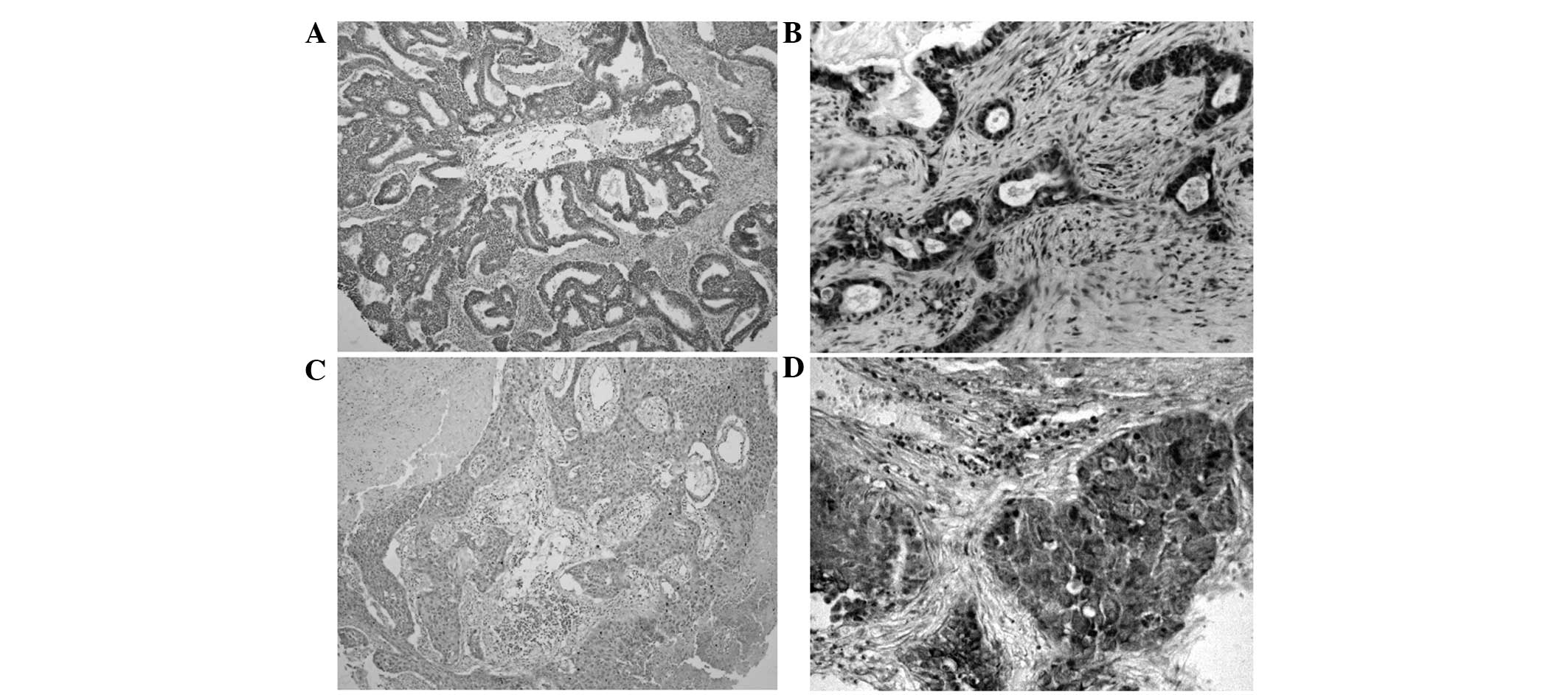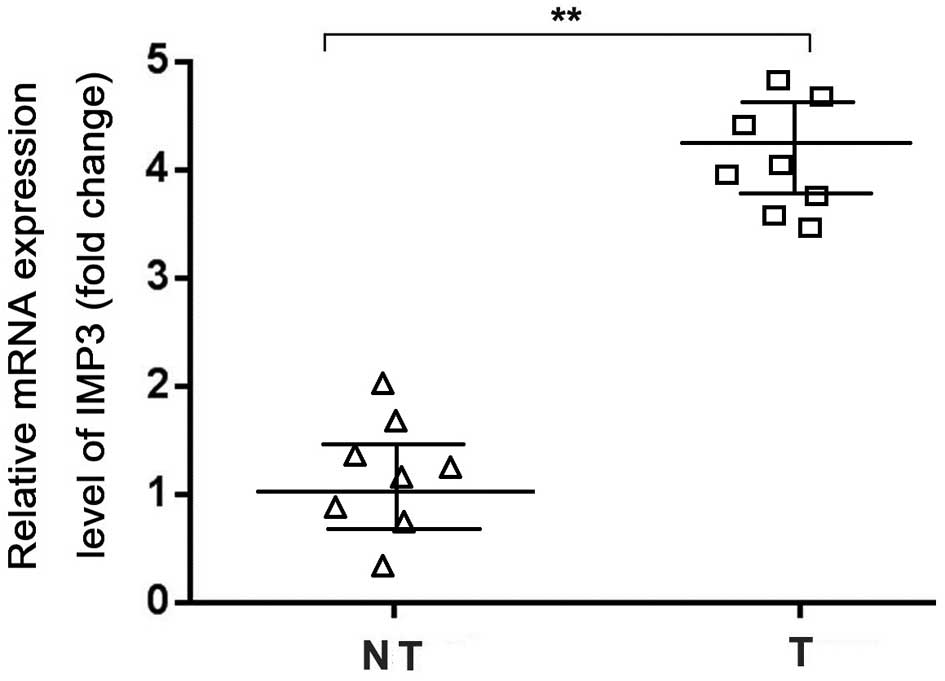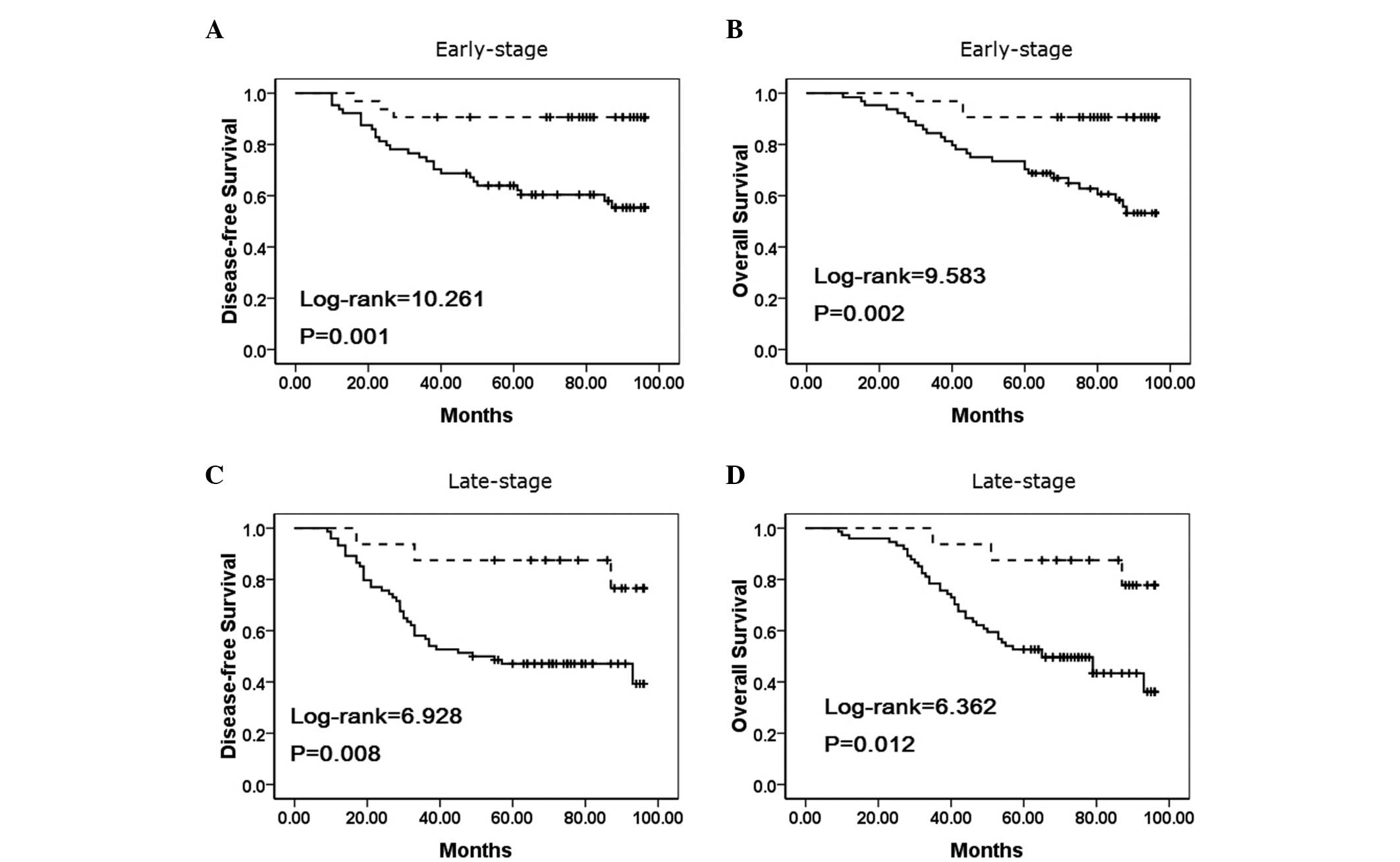|
1
|
Brambilla E, Travis WD, Colby TV, et al:
The new World Health Organization classification of lung tumours.
Eur Respir J. 18:1059–1068. 2001. View Article : Google Scholar
|
|
2
|
Lokk K, Vooder T, Kolde R, et al:
Methylation markers of early-stage non-small cell lung cancer. PLoS
One. 7:e398132012. View Article : Google Scholar : PubMed/NCBI
|
|
3
|
Ikenberg K, Fritzsche FR, Zuerrer-Haerdi
U, et al: Insulin-like growth factor II mRNA binding protein 3
(IMP3) is overexpressed in prostate cancer and correlates with
higher Gleason scores. BMC Cancer. 10:3412010. View Article : Google Scholar : PubMed/NCBI
|
|
4
|
Mentrikoski MJ, Ma L, Pryor JG, et al:
Diagnostic utility of IMP3 in segregating metastatic melanoma from
benign nevi in lymph nodes. Mod Pathol. 22:1582–1587. 2009.
View Article : Google Scholar : PubMed/NCBI
|
|
5
|
Hoffmann NE, Sheinin Y, Lohse CM, et al:
External validation of IMP3 expression as an independent prognostic
marker for metastatic progression and death for patients with clear
cell renal cell carcinoma. Cancer. 112:1471–1479. 2008. View Article : Google Scholar : PubMed/NCBI
|
|
6
|
Jiang Z, Chu PG, Woda BA, et al:
Combination of quantitative IMP3 and tumor stage: a new system to
predict metastasis for patients with localized renal cell
carcinomas. Clin Cancer Res. 14:5579–5584. 2008. View Article : Google Scholar : PubMed/NCBI
|
|
7
|
Schaeffer DF, Owen DR, Lim HJ, et al:
Insulin-like growth factor 2 mRNA binding protein 3 (IGF2BP3)
overexpression in pancreatic ductal adenocarcinoma correlates with
poor survival. BMC Cancer. 10:592010. View Article : Google Scholar : PubMed/NCBI
|
|
8
|
Mhawech-Fauceglia P, Herrmann FR, Rai H,
et al: IMP3 distinguishes uterine serous carcinoma from endometrial
endometrioid adenocarcinoma. Am J Clin Pathol. 133:899–908. 2010.
View Article : Google Scholar : PubMed/NCBI
|
|
9
|
Lu D, Yang X, Jiang NY, et al: IMP3, a new
biomarker to predict progression of cervical intraepithelial
neoplasia into invasive cancer. Am J Surg Pathol. 35:1638–1645.
2011. View Article : Google Scholar : PubMed/NCBI
|
|
10
|
Hammer NA, Hansen Tv, Byskov AG, et al:
Expression of IGF-II mRNA-binding proteins (IMPs) in gonads and
testicular cancer. Reproduction. 130:203–212. 2005. View Article : Google Scholar : PubMed/NCBI
|
|
11
|
Chen LT, Lin LJ and Zheng LL: The
correlation between insulin-like growth factor II mRNA binding
protein 3 expression in hepatocellular carcinoma and prognosis.
Hepatogastroenterology. 60:553–556. 2013.
|
|
12
|
Lin L, Zhang J, Wang Y, et al:
Insulin-like growth factor-II mRNA-binding protein 3 predicts a
poor prognosis for colorectal adenocarcinoma. Oncol Lett.
6:740–744. 2013.PubMed/NCBI
|
|
13
|
Singletary SE, Greene FL and Sobin LH:
Classification of isolated tumor cells: clarification of the 6th
edition of the American Joint Committee on Cancer Staging Manual.
Cancer. 98:2740–2741. 2003. View Article : Google Scholar : PubMed/NCBI
|
|
14
|
Liao B, Hu Y and Brewer G: RNA-binding
protein insulin-like growth factor mRNA-binding protein 3 (IMP-3)
promotes cell survival via insulin-like growth factor II signaling
after ionizing radiation. J Biol Chem. 286:31145–31152. 2011.
View Article : Google Scholar : PubMed/NCBI
|
|
15
|
Gredes T, Spassov A, Mai R, et al: Changes
in insulin like growth factors, myostatin and vascular endothelial
growth factor in rat musculus latissimus dorsi by
poly-3-hydroxybutyrate implants. J Physiol Pharmacol. 60(Suppl 3):
77–81. 2009.
|
|
16
|
Ozdemir NO, Türk NS and Düzcan E: IMP3
expression in urothelial carcinomas of the urinary bladder. Turk
Patoloji Derg. 27:31–37. 2011.PubMed/NCBI
|
|
17
|
Liao B, Hu Y, Herrick DJ and Brewer G: The
RNA-binding protein IMP-3 is a translational activator of
insulin-like growth factor II leader-3 mRNA during proliferation of
human K562 leukemia cells. J Biol Chem. 280:18517–18524. 2005.
View Article : Google Scholar : PubMed/NCBI
|
|
18
|
Vikesaa J, Hansen TV, Jønson L, et al:
RNA-binding IMPs promote cell adhesion and invadopodia formation.
EMBO J. 25:1456–1468. 2006. View Article : Google Scholar : PubMed/NCBI
|
|
19
|
Yamamoto H, Arakaki K, Morimatsu K, et al:
Insulin-like growth factor II messenger RNA-binding protein 3
expression in gastrointestinal mesenchymal tumors. Hum Pathol.
45:481–487. 2014. View Article : Google Scholar : PubMed/NCBI
|
|
20
|
Lee DJ, Xylinas E, Rieken M, et al:
Insulin-like growth factor messenger RNA-binding protein 3
expression helps prognostication in patients with upper tract
urothelial carcinoma. Eur Urol. 66:379–385. 2014. View Article : Google Scholar : PubMed/NCBI
|
|
21
|
Beljan Perak R, Durdov MG, Capkun V, et
al: IMP3 can predict aggressive behaviour of lung adenocarcinoma.
Diagn Pathol. 7:1652012. View Article : Google Scholar : PubMed/NCBI
|
|
22
|
Lin L, Zhang J, Wang Y, et al: Expression
of insulin-like growth factor 2 mRNA-binding protein 3 expression
and analysis of prognosis in the patients with lung squamous cell
carcinoma. Xi Bao Yu Fen Zi Mian Yi Xue Za Zhi. 29:694–697.
2013.PubMed/NCBI
|













